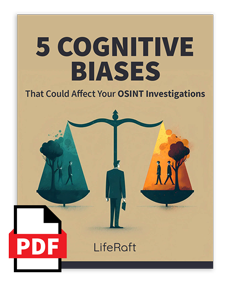When TikTok launched in 2016, many people doubted the video app would gain much traction. They’re not doubting anymore.
Today, TikTok boasts over 1.4 billion active monthly users – putting it well ahead of more established platforms like Reddit, Pinterest, and Twitter.
Moreover, a recent takeover offer valued the social media company at over $50.0 billion – more than twice the total market capitalization of Southwest Airlines.
Such growth has turned TikTok into a valuable tool for collecting open-sourced intelligence, or OSINT.
Analysts can access footage of events that impact their clients, from misinformation and social unrest to criminal activity and natural disasters.
And more often than not, you can learn about emerging situations on TikTok hours or even days before media outlets report those same events.
But gathering OSINT on TikTok can present a challenge.
The nature of the app doesn’t lend itself well to simple keyword searches like other social media platforms.
An advanced algorithm also does a remarkable job of serving content based on your interests – not necessarily what you want to find as an investigator.
So how can analysts address these problems?
At LifeRaft, we’ve helped hundreds of customers start collecting OSINT on TikTok.
So in this post, let’s look at some tricks and techniques for doing just that.
1. Uncover Relevant Accounts with Google Search Operators
Like other social media sites, TikTok has a search bar at the top of each page. You can use this search function to uncover videos, accounts, and hashtags.
To do this, enter your keyword into the search bar and hit ‘Enter.’ TikTok will then return a list of results organized into three tabs: ‘Top,’ ‘Accounts,’ and ‘Videos.’
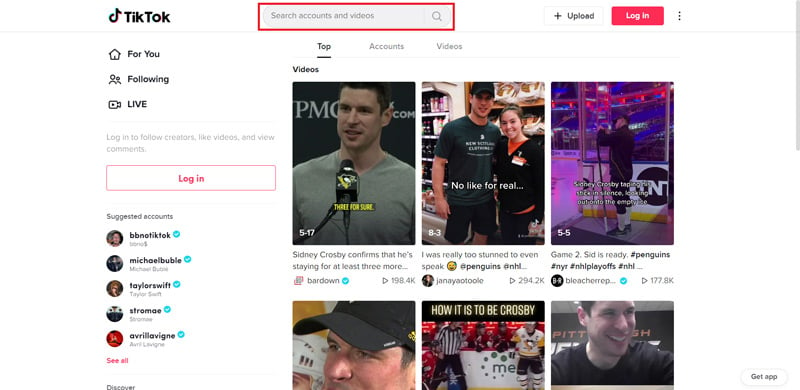
If you want to find a specific organization to follow, ‘Accounts' is the place to look first.
But while TikTok may have one of the best algorithms for delivering personalized content on the web, its search function leaves something to be desired.
Results often include a large number of irrelevant listings. That can make it tough to spot a specific account of interest among hundreds of pages.
To get around this problem, it often makes more sense to perform search queries in Google using the “site” search operator.
To do this, type the following into the Google search console:
site:tiktok.com “{organization name}”
But say you don't know the exact phrasing an organization may use for their TikTok account.
In this case, you can expand your search by using an ‘OR’ operator and include possible alternative spellings of the account name – such as an acronym or nickname.
For this, update the previous Google query as follows:
site:tiktok.com “{organization name}” OR “{alternative organization name}”

TikTok accounts can be found on Google using the “site” search operator.
2. Recover Old Profile Photos With the Wayback Machine
Once you have identified a profile of interest, you can begin extracting information.
One of the first things you should review? The profile picture.
Like most other social media services, TikTok only allows one profile picture for each account. So when a user updates this image, the previous version is deleted.
If you want to save the profile picture, first right-click on the image. Then select "Open image in new tab." That will open a full-sized picture, which you can then save like any other image file.
If you need to locate a previously used profile image, then check the Internet Archive Service.
To do this, go to the Wayback Machine and enter the URL for the target TikTok profile. The site will then return any previously captured profile information.
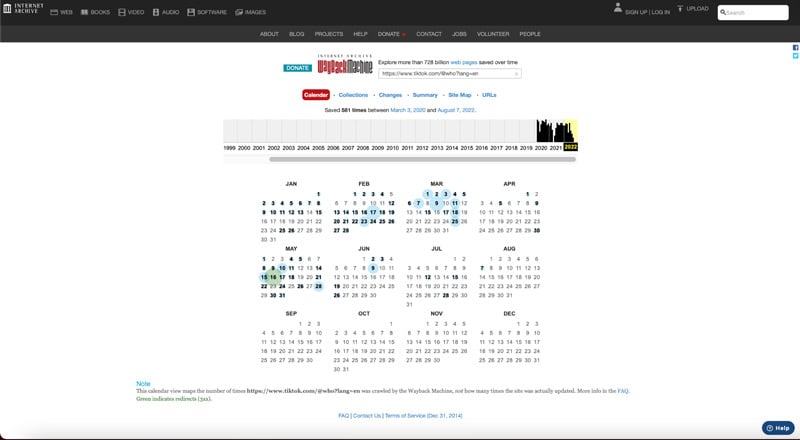
Archived pages for the World Health Organization’s TikTok profile, provided by the Wayback Machine.
This method won't always work.
The Wayback Machine doesn’t keep a copy of every TikTok profile across every period of time. Still, it’s worth trying out to see if it returns something useful.
But if you hit paydirt and uncover an old TikTok profile image, you can conduct a reverse image search and find other places where users posted the picture.
3. Download TikTok Videos to Archive for Later
Any experienced OSINT investigator understands the importance of archiving content.
A post could disappear at any time. And once deleted, it may be impossible to recover.
That could potentially jeopardize an investigation. Or it may result in a security team missing out on valuable threat intelligence.
That’s why it’s essential to download and store any relevant pieces of content you come across during the course of your research.
On TikTok, unlike other social media platforms, you can’t download videos straight from the desktop version of the website. There is, however, a workaround.
Here’s how to do it.
First, right-click on the video and select “Inspect.” That will open a panel that allows you to view the page's HTML and CSS source code.
Next, browse through the code and look for a link that starts with “v-16-web.tiktok.com.” Right-click on that URL link and open it in a new browser tab.
This new page allows you to download video content directly to your workstation for archiving later.
If this doesn’t work, try resetting your computer or repeating the process in a different browser.
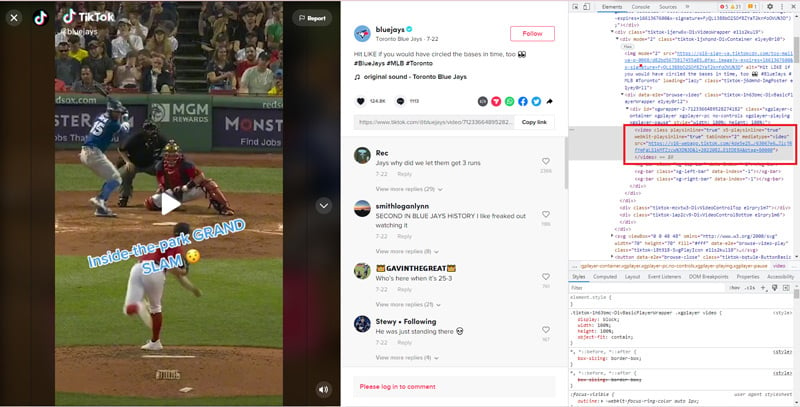
To download video content on TikTok, browse through the source code and look for a link that starts with “v-16-web.tiktok.com.”
4. Uncover Content with Audio Search
Developers built TikTok with audio in mind.
Users dub most content posted to the site with some kind of soundtrack. And while TikTok created this feature for songs, users upload videos dubbed with all types of audio files – from speeches and impersonations to movie clips.
In addition, TikTok is one of the few social networks where you can search the site by audio file.
When you click on a video, look at the top-right panel. Before the description, you will see a music note icon with the name of the soundtrack.
After clicking on this link, TikTok will return any videos on the site that include the same song or audio.
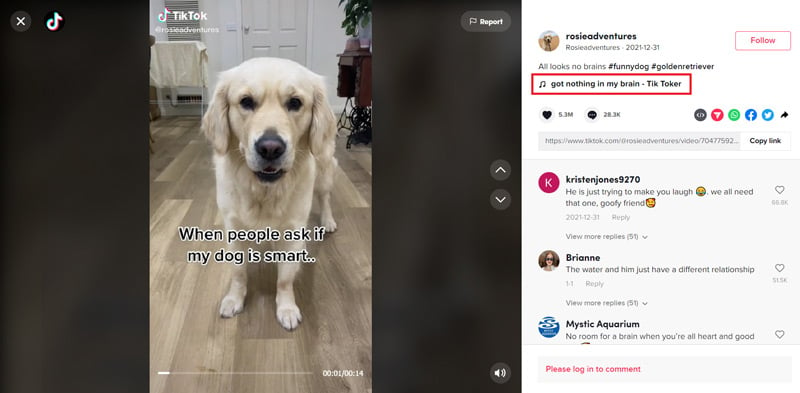
TikTok’s audio search feature represents a useful tool for uncovering related content across the platform.
This audio search function represents a handy tool when collecting OSINT on TikTok.
When users discuss a particular topic on the site, they will often dub each video with the same soundtrack. So by searching for music titles rather than keywords, you can uncover related content.
5. Unlock the TikTok Algorithm By Using Multiple Devices
TikTok’s advanced algorithm serves up personalized content tailored to each user. That explains the addictive nature of the app – the average user spends almost two hours on it daily.
This personalization begins as soon as you join the site.
During the sign-up process, for instance, TikTok will ask you to select from a list of your hobbies and interests.
The algorithm also recognizes your device settings, including location and language, when deciding what content to serve you.
Additionally, your feed will also change over time depending on your viewing habits.
For example, as you pick up a new interest in dogs, the app will serve up more dog-related videos. That happens as you engage with more dog and pet-related content.
As a result, every user on TikTok enjoys a highly personalized experience. What content you see on your feed will not be the same as what your friends or colleagues see on theirs.
Someone who enjoys fashion, for instance, will see more recommendations for clothing and style videos. Yet those posts will almost never appear in the feed of someone who prefers finance and economics-related content.
This personalized experience, however, creates a problem for those trying to gather OSINT on TikTok.
Once you begin researching any particular topic, you will quickly find your feed swamped with video after video on that issue. That can make it hard to dive into a new topic at the start of another investigation.
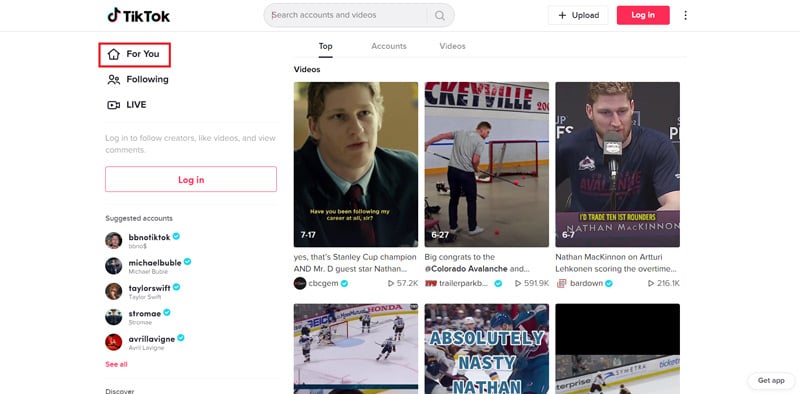
TikTok’s “For You” page delivers video content tailored to each user.
So how do OSINT analysts avoid this issue?
“For each topic that I like to investigate, I have a different phone.” Director of Research and Analytics at 2430 Group Lindsay Wright explained in a recent LifeRaft webinar.
“So if I’m looking for COVID misinformation, for example, I will have one phone dedicated to just querying COVID and vaccine themes. Then I will interact with any videos that could start populating more of that type of content into my feed.”
6. Browse Anonymously with a Managed Attribution Service
Many organizations prohibit staff from downloading or using TikTok. And they have some good reasons.
For starters, the app is owned by a China-based corporation, ByteDance. That means that its parent company has a legal obligation to provide any data requested by Chinese authorities.
More recently, The New York Times reported Java Script code embedded in the app allows TikTok to monitor all keystrokes on a device. If enabled, company officials could see text inputs such as passwords and credit card information.
TikTok executives have denied these claims.
“We are trying to be one of the most trusted apps,” company Vice President Michael Beckerman explained in a recent CNN interview.
“We have never shared information with the Chinese government, nor would we.”
Despite these reassurances, however, numerous agencies and organizations have blocked staffers from downloading TikTok.
In 2020, for instance, the U.S. military banned service members from using the app on government devices. And earlier this year, the U.K. parliament shut down its TikTok account after MPs flagged the app for data security risks.
So how can OSINT analysts safely access TikTok without revealing their activities to unwanted third parties?
At LifeRaft, we frequently recommend clients use a web isolation service, such as Authentic8, during online investigations. Such services allow users to browse the web from a cloud-based server rather than their desktop workstation.
That has two advantages for investigators:
- Firstly, by isolating your session on cloud infrastructure, website code is never executed on your work terminal. That protects your system and your company’s network from web-borne threats such as malware or spyware.
- Secondly, some web isolation services allow users to customize how they appear to the sites and the people they interact with online. They accomplish this by manipulating device details such as location, time zone, language, IP address, and keyboard settings.
That allows investigators to access sites like TikTok without revealing their location or identity to others.
The Bottom Line for Conducting OSINT on TikTok
Each day, millions of people download this app. As the site grows, it will become an increasingly important resource for researchers. And with these tips and techniques in mind, you’ll be on the right track to effectively collect OSINT on TikTok.


